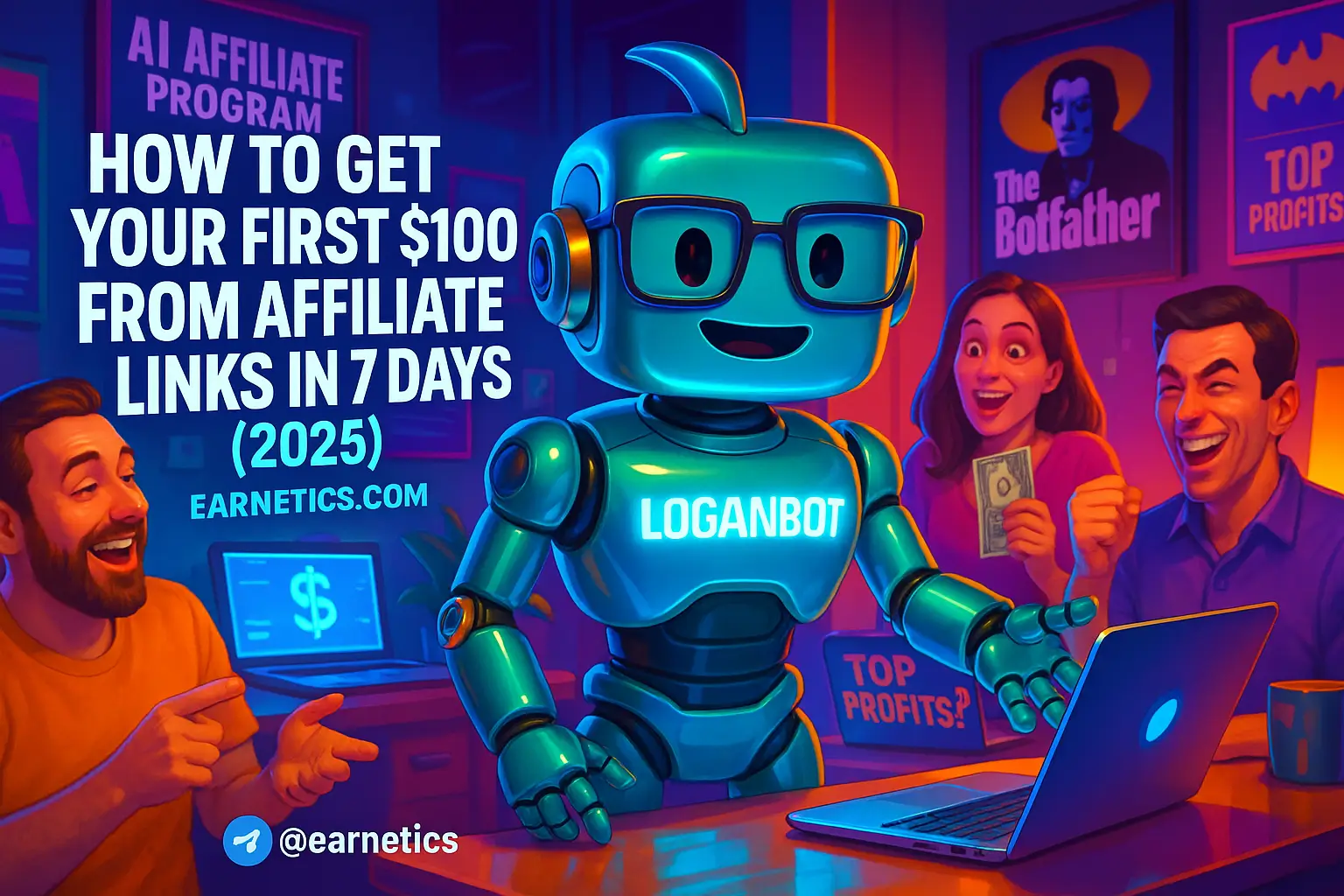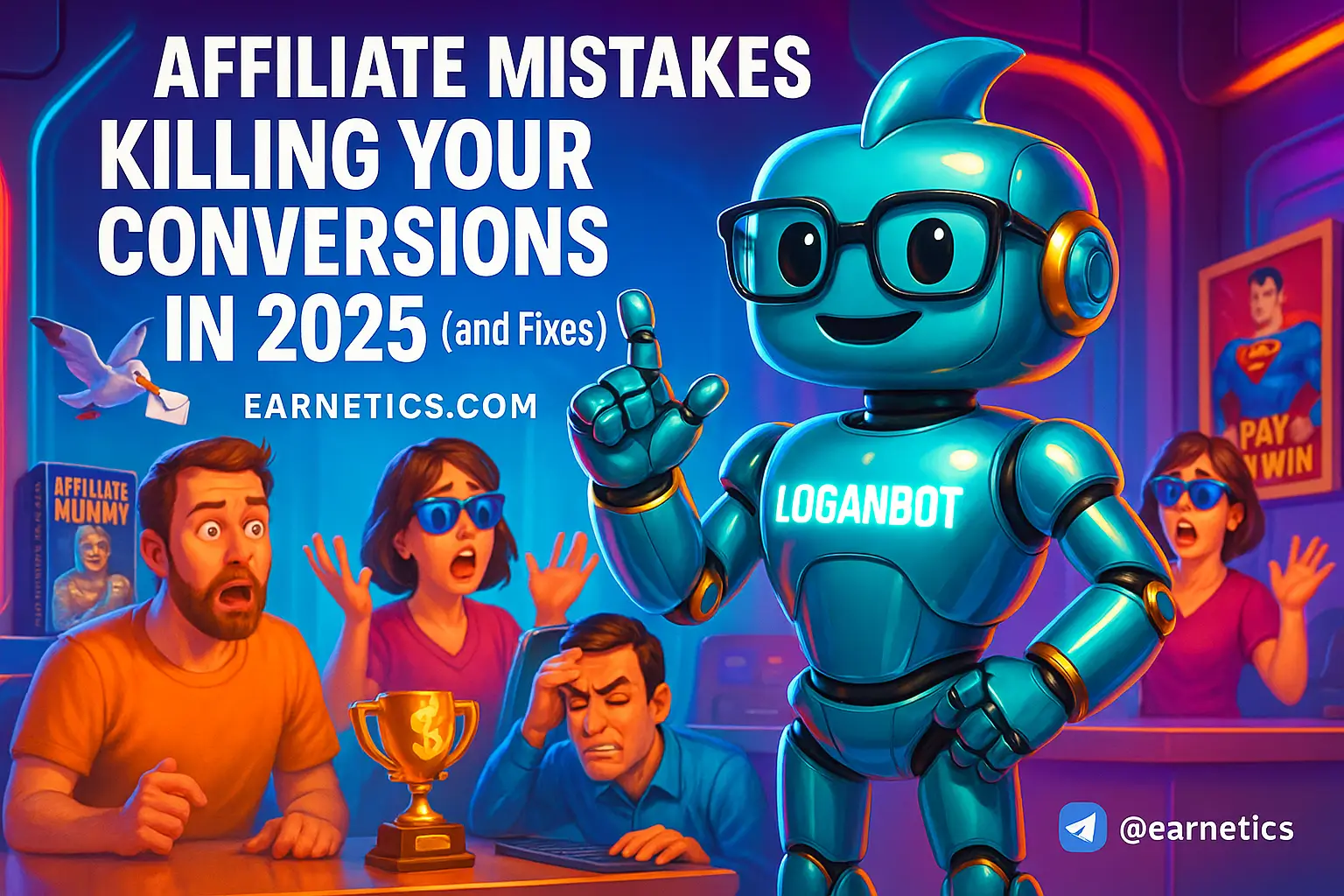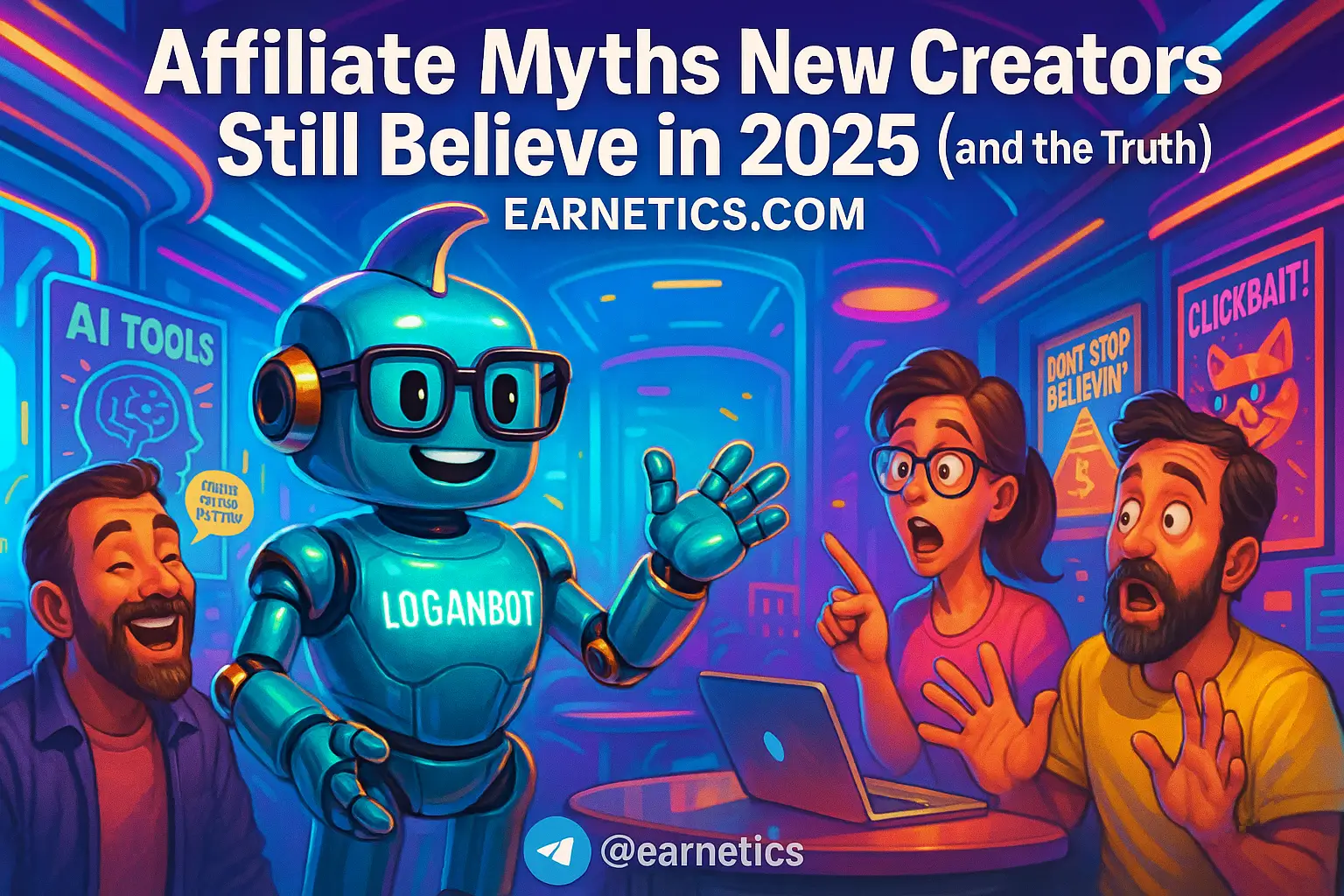How I Hit My First $100 from Affiliate Links in 7 Days (No Audience, No BS)
Want a fast, realistic plan to get your first $100 from affiliate links in 7 days, even with zero audience, minimal tech, and just one offer and one traffic channel?
I said that to myself out loud on a Tuesday and then did it — yes, I literally pulled the strategy together, tested it, and banked that initial payout within a week. The phrase first $100 from affiliate links in 7 days is not a gimmick here – it was a focused, repeatable sprint I ran so you don’t waste time learning the hard way. This guide is written for beginners, creators with small audiences, bloggers, and side-hustlers who want a fast win and a playbook they can scale.
Here’s the roadmap I used: pick a high-converting offer, promote it fast with one traffic channel, place links where people actually click, and track the tiny experiments so you can scale. If you prepare the essentials in 24 hours – chosen niche, one solid offer, one traffic channel, and a simple landing post or creative – you’ll be ready for the 7-day sprint.
I’m not pretending I invented a magic shortcut. I messed up tracking, promoted trash offers once, and wasted dollars on ads that should have stayed in my wallet. But I also learned what moves the needle quick: low-ticket items that convert, tight copy with one clear CTA, and a single platform where your audience already hangs out. Over the next sections I’ll walk you through exactly how I picked offers, wrote swipe-ready promos, placed links so they convert, drove fast traffic, and set up basic tracking to protect your ROI. Stick with me and take the micro-tasks each day – you’ll either make $100, or learn the exact tweak that will get you there next time. Either way, you win.
Choose High‑Converting Offers
Pick low-ticket, high-conversion products
Pick low-ticket, high-conversion products
When I chased the first $100 from affiliate links in 7 days, I stopped dreaming about $500 commissions and started doing math. Low-ticket offers under $50 often convert much faster for newbies because the purchase decision is small and fast. Quick math: a $25 sale at 20 percent commission gives you $5 per sale – you need 20 of those. A $49 product at 30 percent can get you to $100 with 7 sales. The point is to pick the math that fits your expected traffic volume and conversion rate.
In my run, I targeted products that solved a specific, urgent pain – not generic “productivity” noise. That meant higher CTR and faster buys. Know your buyer intent – if someone is looking for quick solutions, they buy faster.
Use reliable affiliate networks and promo-ready programs
I used networks that had decent merchant pages and affiliate resources. For 2025, look beyond the obvious for balance: Amazon for physical goods, ShareASale for niche merchants, and alternatives like CJ Affiliate and Impact for digital tools. For high-conversion digital products, ClickBank-style platforms still exist but check merchant reputation first.
Pro tip from my checklist: choose offers that include swipe copy, creatives, or demo videos. If the merchant hands you promo-ready assets, you save time and usually convert better. Also, check merchant conversion rates and affiliate reviews in forum threads before committing.
Evaluate landing pages, cookie length, and commission structure
Before I promoted anything, I reviewed the landing page like a buyer. Is the CTA clear? Is the mobile UX smooth? Cookie length matters a lot – a 30-day cookie gives you more time to earn from returning visitors, while a 24-hour cookie is brutal unless conversion is instant. Also decide if you want recurring commissions or one-time payments – recurring is nicer long-term, but one-time high-converters might be faster for this first $100 push.
Quick checklist I ran through: clear CTA, fast load time, mobile-first design, cookie length, payout threshold, and available creative assets. If any of those flags were red, I walked away.
Fast Promotion Tactics
Email quick-win: reach warm contacts
Email quick-win: reach warm contacts
I cold-started this sprint by emailing people I already knew would care – friends, newsletter subscribers, and past clients. Email converts because it’s permissioned and direct. My simple template was short, human, and included one link and one CTA. Subject lines I used: “Quick win for X”, “Saved you time on Y”, “Two-minute tool that fixed my Z”. Always be transparent and include a disclosure – nothing kills trust faster than a surprise affiliate link.
Template I used: Hey [Name], I tried [product] and it solved [pain]. If you want to check it out, here’s a quick link and a 60-second demo I recorded. No fluff. Cheers, [My Name]. That got clicks because it felt like a recommendation, not an ad.
Social microcontent that converts
Short-form video and single-image posts were my bread and butter. I wrote 15-second scripts that started with a problem, showed the product solving it, then pointed to the link in bio. Example script: “Tired of X? This $29 tool fixed it in 3 minutes. Link in bio – watch me set it up.” For captions I used swipe-copy: one-line hook, one sentence benefit, one CTA. Keep it conversational and show the product in action.
I repeated the creative across platforms to build familiarity and used a single URL so analytics weren’t a dumpster fire.
Cheap paid tests to validate offers
If organic didn’t move fast enough, I ran small paid tests – $5 to $10 per day on TikTok or Meta search experiments. My goal was not to scale immediately but to validate the creative and landing page. Metrics I watched: CTR over 1.5 percent, add-to-cart or landing engagement, and cost per click. Cap your spend: if a creative doesn’t show traction in 48 hours, kill it and try a new angle. Ads are for validation, not for ego.
Optimize Link Placement
Best spots in content and profiles
Best spots in content and profiles
Where you put the link matters more than how pretty the page is. I used bio links, pinned posts, the first comment on social posts, and in-body links for long-form content. Your link-in-bio should go to a simple landing page that explains the offer and has the affiliate link above the fold. People don’t scroll for your affiliate disclosure – they click the CTA. Make that click obvious and frictionless.
On platforms that allow it, I added a direct affiliate link to my bio and a secondary landing page for extra context. The simpler the path, the higher the conversions I saw.
Use bonuses, CTAs, and urgency to increase CTR
Bonuses work like stupid glue for clicks. I offered a small downloadable checklist or a short video walkthrough as a bonus to anyone who bought through my link. That moved fence-sitters. Use scarcity language sparingly – “limited bonus until Friday” – and pair it with a clear, single-action CTA like “Check it out” or “Grab the quick fix”. Too many CTAs equals decision paralysis.
Keep your bonus delivery automated – a simple email with the bonus link after purchase protects your time and keeps buyers happy.
Build trust: clear disclosure + social proof
I always added a short disclosure: “I may earn a small commission if you buy via my link – I only recommend stuff I use.” That line saved me from looking slimy and actually increased conversions because people appreciated the honesty. For social proof, I used screenshots, quick testimonials, and one authentic micro-case study showing the product in action. Even a single screenshot of a happy DM can tilt a decision.
Drive Free Traffic Fast
Leverage niche forums and Q&A (Reddit, Quora, community groups)
Leverage niche forums and Q&A (Reddit, Quora, community groups)
Free traffic was the oxygen for my seven-day run. I spent time in niche forums and Q&A sites answering real questions, not posting ads. The trick is value-first: answer fully, then drop your link as a reference or in a follow-up comment. On Reddit, follow subreddit rules strictly and use a soft CTA. On Quora, write a clear answer and include your link as a source. That earned me targeted clicks without burning cash.
Tip: customize each post for the audience. One-size-fits-all content gets ignored fast.
Short-form video discovery (YouTube Shorts, TikTok, Instagram Reels)
I posted discovery-first short videos that solved a single pain point and included a CTA to “link in bio” or “check pinned comment.” Videos that showed before/after results worked best. Don’t hard sell – teach, demo, then invite. Use captions and a visible CTA card in the video to catch skimmers. Reposting the same clip with different hooks boosted reach quickly.
Quick SEO wins: answer long-tail questions
For one quick organic win, I wrote a single optimized comparison post or how-to targeting a buyer-intent long-tail keyword. Make it short, scannable, and include your affiliate link near the top and in a CTA box. With a little on-page SEO and sharing in niche communities, that one post generated steady clicks within days. Don’t overthink SEO for this sprint – target low-competition long-tail queries and publish fast.
Track, Test, and Scale
Set up simple tracking and UTMs
Set up simple tracking and UTMs
Tracking saved me from throwing money at posts that looked good but converted like a broken vending machine. I used UTM parameters on every link and a link shortener that shows click stats. For conversion basics, connect to Google Analytics or your affiliate dashboard. If you want to go deeper, the Google Analytics conversion setup guide is a solid start: https://support.google.com/analytics/answer/10089681. Track source, medium, campaign, and creative variant so you know what actually brought buyers.
Even basic click-to-conversion tracking prevents guesswork and helps you scale what works.
A/B test creatives, headlines, and placements
Within the 7-day window I prioritized quick A/B tests: two headlines, two thumbnails, and two CTAs. Test one variable at a time and run for 24 to 48 hours. Early patterns reveal what resonates. If a headline doubles CTR, copy that into other promos. If a thumbnail tanks, kill it fast. Data over pride – always.
Scale what converts and cut what doesn’t
When a creative or channel performed, I doubled the spend or reposted it to similar groups. When something underperformed, I cut it immediately and reallocated that time or money. Scaling should be mechanical: increase ad spend in 20 to 50 percent increments, repost winning content with fresh hooks, and preserve margins so you don’t accidentally buy your “win”.
Conclusion
Summary: the 7-day blueprint I used is simple and brutal in its focus – pick the right offer, promote fast, place links where people click, drive traffic, and track the results so you can scale. That structure took me from zero to the first $100 from affiliate links in 7 days and gave me a repeatable workflow I use for fast launches.
Here’s a quick 7-day checklist you can follow exactly:
1. Day 1 – Pick niche, choose one offer, set up affiliate link and landing post.
2. Day 2 – Create one email, one short-form video, one social post, and a simple bio landing page.
3. Day 3 – Send email to warm contacts, post video, and share in one niche forum.
4. Day 4 – Run a $5 to $10 paid creative test if organic stalls; monitor CTR and engagement.
5. Day 5 – Tweak headline, swap thumbnail, and repost winning content.
6. Day 6 – Add a small bonus for buyers, push one more email or follow-up social post.
7. Day 7 – Count sales, analyze UTMs, double down on the top-performing channel.
Realistic expectations: this is a sprint, not a business model. You might hit $100, you might not. What you will get is a clear feedback loop telling you what converts. Turn that first $100 into a repeatable system by documenting your winning creative, automating bonus delivery, and building a simple funnel that captures emails for future promotions.
Recommended tools I used: a link shortener with click stats, Google Analytics for simple conversion tracking, a lightweight landing page builder, and a small ad budget for rapid validation. Templates, swipe copy, and a small-budget ad playbook make this repeatable.
I’m rooting for you to try one tiny tactic today. Pick an offer, draft a 30-second video or a 3-line email, and measure. The first $100 is less about luck and more about focused, repeatable actions.
Explore more guides on Earnetics.com
⚡ Here’s the part I almost didn’t share… When I hit a wall, automation saved me. My hidden weapon is Make.com – and you get an exclusive 1-month Pro for free.
🔥 Don’t walk away empty-handed. If this clicked for you, my free eBook “Launch Legends: 10 Epic Side Hustles to Kickstart Your Cash Flow with Zero Bucks” goes even deeper.


